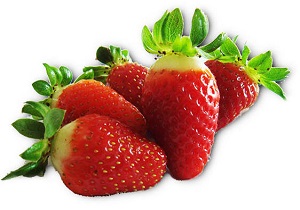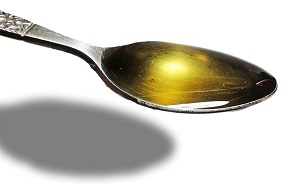
8 Pointers for Reading a Food Label (Claims Can be Very Tricky!)
Before you get some insights about food label here, why not take a 2-question survey which will probably take only 5 seconds or less, and then hit "submit" to see the consolidated poll results!
Note: Upon submission, please wait for 2-3 seconds for the page to compile and show you the results. Thanks!
I began to look out for nutrition information on food label when choosing honey. And when progressing from honey to other foods, the learning process didn't get any easier; in fact it only got more overwhelming. From your cabinet or refrigerator, pull out a few canned foods, bottled drinks, and packaged biscuits, and look at their labels and packaging. Are you able to make any sense out of what you read on the food label? Do you question how transparent food manufacturers are? How much is truth and how much is pure marketing tactics? You probably know what I mean by now.
Food label is an important touch-point for us consumers as it serves as a key source of nutrition information when looking for healthy food. A huge global study done by a marketing research agency ACNielsen revealed that the top six ingredients most likely checked by consumers were "Fat, Calories, Sugar, Preservatives, Colouring, and Additives". And because manufacturers recognise how powerful product claims can be, many have exploited them by being very creative in presenting of information on the food label to the consumers. Here, I have made a list of 8 simple pointers that I thought our readers could gain in one way or another.
1. Look Out for Hidden MSG!
Monosodium Glutamate (MSG), "the miracle flavour enhancer" often associated with Chinese foods, is known to be neurotoxic or harmful to our brain cells. Packaging can claim "no MSG" yet still contain MSG, which can be hidden in fancy or confusing names like yeast extract, autolyzed yeast, sodium caseinate, hydrolyzed protein, yeast food, yeast nutrient, calcium caseinate, gelatine, glutamate, textured protein, and torula yeast. And as if this doesn't boggle our minds enough, there is also "No Added MSG", which seems to imply that there is already some. The truth is MSG is much more prevalent than many people realize. Many popular fast-foods have MSG, and in general, the more highly processed a food is (or the more ingredients listed on its label), the more likely it is to contain MSG.
2. Do You Perceive "Red and Vibrant" as "Fresh"?
I began to realise how much effort food manufacturers spent on food appearance when I learnt that most commercial honey was pasteurised or treated with high heat to prevent crystallisation, which makes it impossible to compete with honey that are smooth, creamy, and appealing.
Similarly, "sodium nitrates" are added to meats to make them look fresh and red on the shelf. Without it, meat would be gray and too unappealing for consumers to buy. Many scientists believe that "nitrates" or "nitrates" found in processed meats like bacon, ham, sausage, pepperoni, salami are cancer-causing chemicals. Dyes are fed to egg-laying hens to make egg yolks turn bright orange, and also given to salmons to look orange-red. Bacon and ham get their red tint from sodium ascorbate, a colour stabilizer, to make them look fresh and vibrant.
3. Don't Expect All Ingredients to be Listed
Food companies can get away with using non-natural processes and chemical ingredients and claim all natural. For example, foods fried at high temperature, resulting in the formation of cancer-causing acrylamides. There is no requirement for food ingredients lists to include chemical contaminants or toxic substances found in food and manufacturers need not declare all of the ingredients they use. Additives which are used as processing aids or serve no technological function in the finished product also don't have to be listed.

4. Definition of "Natural" can be Ridiculously Loose
Does picking up foods labelled with the word "natural", such as "natural honey", "natural oil", "natural sauce" make you feel happier? A food labelled "all natural" can contain pesticides, herbicides, heavy metal toxins, hidden MSG, synthetic chemical vitamins, and a host of other non-natural substances. "Natural" does not mean organic. As there is no official definition for "natural food", food producers and manufacturers have the liberty to call anything natural. Another trick is to pad the list with itsy-bitsy amounts of great sounding ingredients like natural berries and herbs. Having a tiny amount of a superfood appear at the end of the ingredients list often doesn't mean anything in terms of health value.
5. Beware of "Natural Coloring"!
Artificial colours like FD&C Red No.5, FD&C Yellow No. 5 (Tartrazine), FD&C Blue No. 1 (Brilliant Blue FCF) come from coal tar which is basically a petrochemical product. Found in ice cream, canned processed foods, sweets, drinks, soaps, shampoos, and cosmetic application, they have caused allergic reactions such as migraines, itching, rashes, anxiety, and general weakness in some people. Carmine, a well-known natural food, drug, and cosmetic additive found in "strawberry" yogurt, ice-cream, milk, fake crab, lipstick, eyeliners, nail polish sounds like an innocent pink food colouring but it's actually made from the smashed bodies of cochineal beetles (shocked?). Despite reports of severe allergic reactions, it's still been regarded by the food industry as safe and imposing "no significant hazard" to the public. More details on "carmine" in Does Natural Food Coloring Bug You?
6. Know that Sugar and Fat Have Many Names
One of the most common tricks is to distribute sugars such that they don't appear in the top three of the food label. For e.g, a manufacturer many use a combination of sucrose, high-fructose syrup, corn syrup, brown sugar, dextrose to make sure none of them are in large enough quantities to attain a top position on the ingredient list. The same goes for fat; "total fat" includes all kinds of fat: saturated, trans fat, polyunsaturated, monounsaturated. Many foods that claim to be "low-cholesterol" can be full of saturated fats.
7. Nutrition Claims Can Be Awfully Deceptive
The name of the food product has nothing to do with what's in it. For instance, a "cheese cracker" doesn't have to contain any cheese, or a "fruit juice" doesn't have to comprise any drop of real fruit juice. Nutrition labelling is required when a nutrition claim is made e.g "High in calcium", "High in Fibre", "Low in Sugar", "Zero Trans-fat". By the way, any food containing 0.5g or less of trans fat per serving is allowed to claim zero trans fat on the packaging. Hence companies arbitrarily reduce the serving sizes of their foods to ridiculously small amount (e.g 1 small cookie) to bring trans fat down to 0.5g per serving. If you take 30 cookies with 0.5g of trans fat each, you would have taken 15g of trans fat in total!

8. Think Twice When Laying Hands on "Sugar Free" and "Diet" Foods
Watch out for hidden sugar in processed foods like bread, salad dressing, soups, and be careful with "fat-free" products, as sugar or sucrose is often used to replace the flavour that is lost when fat is removed. Fat-free doesn't mean calorie-free. You think brown sugar is less refined and processed, and healthier than white sugar? Wrong, brown sugar is a gimmick to fool consumers into paying more; it's just white sugar with brown colouring added either in the form of burnt sugar or molasses which offers no significant nutritional advantages in that small quantity. And don't be fooled by what artificial sweeteners can offer you. They mimic the taste of table sugar but have virtually no useful energy. In fact sugar substitutes like saccharin, sucrolose, and aspartame are toxic to the body. So be more sensitive to food label claims with words like and "sugar free", "diet", and "low calorie".
Be an intelligent shopper; fill your carts with lots of fresh raw foods like vegetables and fruits. Don't get fooled by deceptive food packaging, see through the marketing hype on food packaging, be sceptical about claims such "less", "natural", "reduced", "free", "light", ask if the serving size indicated is the amount you would usually eat as one portion; be an avid food label reader.

Related Articles
1. Food Fraud is Big Business Today!
With the prevalence of food frauds everywhere, are we still sure that we know exactly what we are paying for? Food Fraud is Big Business Today!
2. Beware, the Natural Food Rage is on!
The Natural Food rage is on! Don't get duped by claims like "100% natural", "all natural", and "natural".
3. Does Natural Food Coloring Bug You?
Carmine" is now found in foods like juices, milk, candies and cosmetics. But what is carmine? Some natural food coloring? Yes, but... you're not going to believe this...
4. The Ice-cream That Does Not Melt
Would you like an ice-cream that doesn't melt?
5. Really Real Honey?
How much do you trust the labels and claims on honey bottles? Eating Real Honey?
6. Do "Natural", "Pure", "Raw" Honey Labels Baffle You?
Natural Honey, Pure Honey, Raw Honey...honey labels can be confusing. These tips would lend you some clues about honey labelling: Making Sense of Honey Labels.
7. Chinese Honey, What's In It?
The picture of a Chinese beekeeper selling honey right from a red plastic pail is an eye opener. Do the people actually care about the kind of honey they are buying? Read all in: Chinese Honey, What's In It?
8. Is Froot Loops Really a Smart Choice?
Kids' favorite snack, Froot Loops has been given a Smart Choice label! How possible is this? Read all in: Froot Loops Gets a Healthy Food Label?.
9. I Love Honeycombs!
Hey, watch out for the honeycomb theme in some of the most delicious, but unfortunately, not so healthy snacks. Read all in: In the Name of Honeycombs.
10. Should Energy Drinks be Labelled as Healthy?
Has anyone told you about energy drink side effects? Read all in: Beware of Energy Drink Side Effects.
10. Sugary Drinks and Obesity
Truths about sugary drinks, obesity and calories can be so audaciously twisted: Coke's Opinion About Obesity and Calories.
11. Eat foods or nutrients?
Are we sure we know what healthy eating is? Do you eat foods or nutrients?: Healthy Eating Confusions.
12. Read John Smith's take on Chinese honey: Is Chinese Honey Fake Honey?.